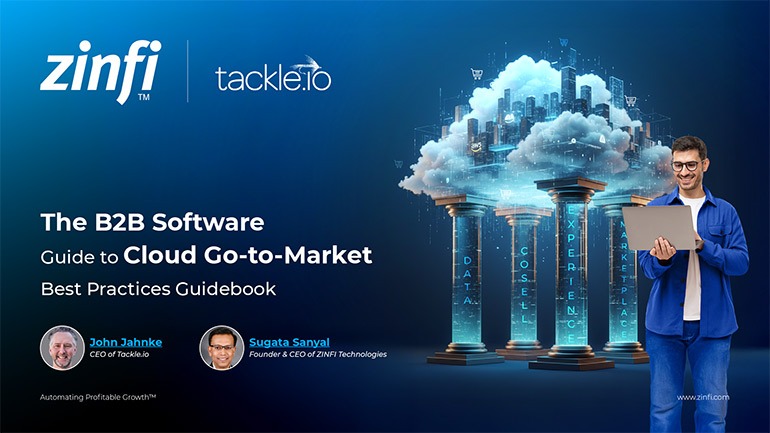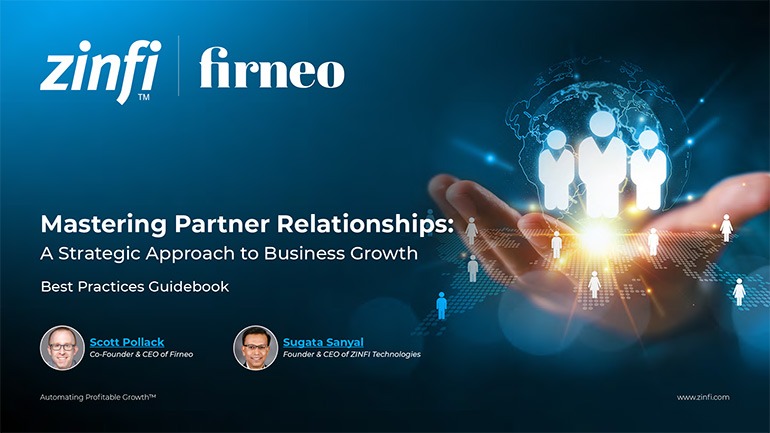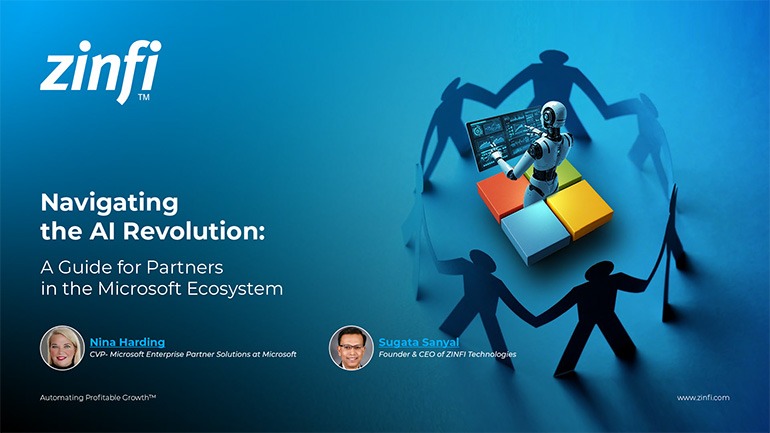Best Practices Articles

Build a Brand That Sells with Social Selling
Social selling has redefined how influence and trust shape the digital world. No longer confined to press releases or executive speeches, influence now begins with a post, a comment, or a casual chat. Sales have shifted from being transaction-focused to trust-driven. As a result, a strong digital presence and a deliberate personal branding strategy now drive revenue.
Modern B2B buyers rely less on brochures and pitches and more on people—experts, peers, and influencers. These individuals show up consistently, offer insights, and maintain digital authenticity. Buyers notice them early. Personal brands that convey trust shape decisions long before sales meetings begin.
Building a brand that sells isn't self-promotion. It’s purposeful storytelling backed by emotional intelligence and strong sales enablement tools. Sellers, marketers, and partners must stay true to themselves and offer real value. As personal and professional lines blur, successful brand builders translate market needs into clear stories that connect people with purpose.
This transformation doesn’t happen by accident. It stems from organizational support. When companies invest in enablement—from training and tools to cross-functional collaboration—they fuel community-driven growth and build trusted voices that drive business results. This article will explore how social selling, personal branding, and collaborative culture form the foundation of sustainable B2B growth.
1. Personal Branding as a Revenue Strategy
Social selling thrives on personal branding. It’s not enough to represent a product. Buyers look for authenticity, consistency, and relevance. They pay attention to how sellers act and speak online. A strong personal branding strategy builds recognition and trust before discovery calls occur.
Top performers anchor their message on market needs. They earn trust by sharing lessons, challenges, and wins. Their influence doesn’t come from being perfect but from being real. They post with intent, not just for attention. They create conversations, not just content.
These sellers use storytelling, tone, and timing to position themselves as contributors. They build community through posts that resonate. They don’t chase algorithms; they stay focused on purpose and presence. Through this approach, social selling turns visibility into influence—and influence into revenue.
Every meaningful post can start conversations across teams and executives. These conversations increase reach, deepen engagement, and reinforce trust. Sellers who consistently lead with value extend their brand’s impact beyond marketing.
Expanding personal branding through multimedia—such as video, audio, and webinars—enhances reach. Short videos or real-time live streams offer dynamic ways to engage audiences. These formats deepen trust because they feel unscripted and honest. Sellers who combine written content with these interactive formats often see more engagement and stronger brand recall.
2. Emotional Intelligence and Digital Authenticity
Social selling requires emotional intelligence. Sellers must read cues, respond with empathy, and stay human in digital interactions. Scripts and automation alone don’t build trust—real stories do. Digital authenticity drives deeper engagement.
Buyers prefer real people over polished personas. They connect with shared values, honest insights, and human flaws. Relatable stories from personal experience beat generic content. These small moments build what we call digital trust—or social capital.
People remember who made them feel understood. A thoughtful comment or helpful reply often leaves a lasting impression. Over time, this trust compounds. Sellers who consistently act with emotional intelligence become trusted advisors—not just sales reps.
Vanity metrics like likes and shares don’t measure actual influence. Instead, social sellers should focus on depth: quality conversations and consistent relevance. Content that feels real and useful drives long-term loyalty and leads to conversions.
Emotional intelligence also supports inclusive communication. Sellers who consider diverse perspectives foster stronger relationships across markets. They avoid one-size-fits-all messaging. This adaptive approach makes social selling more impactful and culturally resonant.
3. Sales Enablement Tools and Organizational Support
Social selling doesn’t scale without support. Organizations must invest in both people and platforms. Sales enablement tools make content creation, targeting, and personalization easier. These tools help sellers act on buyer intent, adjust tone, and respond quickly.
Innovative systems surface buyer signals and highlight hot leads. Dashboards, scheduling tools, and CRM insights turn data into action. Sellers who use these tools wisely gain speed and precision.
Still, technology alone isn’t enough. Companies must also enable their people. Training, mentoring, and internal sharing build confidence and alignment. Playbooks help with voice and tone. Feedback loops improve content over time.
Culture plays a key role. Successful companies allow sellers to represent the brand in their voice. They encourage experimentation, support visibility, and reward authenticity. They don’t view personal brands as risk—they see them as strategic assets.
Companies should run internal social selling challenges and celebrate standout content to enhance enablement. Recognizing those who drive engagement motivates others. It also encourages knowledge-sharing across teams.
With the right tools and mindset, sellers build real momentum. As their voice grows, so does the brand’s credibility and inbound interest. Enablement becomes the engine behind successful social selling.
4. Evangelism and Community-Driven Growth
Social selling creates evangelists who believe in what they sell and share that belief with others. These individuals go beyond promotion. They live the brand’s mission. They build trust by showing up with honesty and consistency.
Evangelists may be employees, customers, or partners. Internal teams share stories and insights. External voices spread the message further. Together, they grow to reach and build a network of advocates.
At the core of this is community. The best social sellers build spaces for shared learning. They reply to comments, ask questions, and encourage collaboration. These micro-interactions form the base of community-driven growth.
Real stories—not perfect ones—drive the most impact. A seller who shares lessons from a failed pitch often builds more trust than one who only posts wins. Social selling encourages vulnerability, and openness leads to stronger connections.
Communities also drive momentum. As more people engage, the brand relies less on ads and more on peer influence. Trust comes from conversations, not case studies. The more voices involved, the stronger the reputation becomes.
Empowering every voice creates a scalable strategy. People become powerful advocates when they align with the brand and speak authentically. Social selling turns these voices into growth multipliers.
Organizations should host digital roundtables to strengthen the community further, feature employee and partner stories in newsletters, and encourage cross-posting among departments. This not only broadens reach but reinforces shared ownership of the brand.
5. Collaboration and Strategic Alignment
Social selling works best when teams collaborate. Sales, marketing, partnerships, and operations must align to share insights and support one another. Each group plays a part in shaping brand perception.
Marketing creates stories and content. Sales gives real-time feedback. Partnerships open new channels and bring trust networks. Operations provide tools and systems to track performance.
Together, these teams create a unified message. They focus on the buyer, not just the channel. They work from the same data and adapt quickly. Sellers use social platforms guided by shared goals and cross-functional support.
Partnerships especially enhance social selling. Warm intros, co-marketing, and shared content increase trust. Leaders who build their brands also grow the company’s influence in new ecosystems.
When everyone contributes, the brand building becomes a growth engine—not a side task. Insights travel faster. Campaigns feel connected. And every interaction—online or off—reinforces the same story.
Companies can further strengthen alignment by creating cross-functional editorial boards. These groups review messaging, align on themes, and surface field feedback in real time. The result is tighter collaboration and more effective social content.
Conclusion
Social selling isn’t just a trend—it’s a shift in modern B2B sales work. Buyers expect value, relevance, and trust before speaking to a seller. Organizations must combine personal branding strategy, digital authenticity, and the right sales enablement tools to meet this.
Companies that support social selling stand out. They create a culture where every voice counts. They give teams the tools, training, and freedom to build influence. Through collaboration and community-driven growth, they build strong pipelines rooted in trust.
This is no longer optional. Social selling is the key to scalable, sustainable revenue in a world shaped by networks and driven by conversation.
To stay ahead, companies should revisit their enablement plans every quarter. They should track engagement trends, review top-performing content, and evolve their social selling playbooks. Continuous improvement ensures that teams stay relevant and connected to buyer needs.
Best Practices Guidebook
 Modernizing Channel Marketing: AI and Ecosystem Enablement Best Practices
Modernizing Channel Marketing: AI and Ecosystem Enablement Best PracticesDownload for FREE
 The Channel’s Shift to Partner-Led With AI Best Practices
The Channel’s Shift to Partner-Led With AI Best PracticesDownload for FREE
 Hyperscalers, ISVs, and AI: Shaping the Future of B2B Software Distribution
Hyperscalers, ISVs, and AI: Shaping the Future of B2B Software DistributionDownload for FREE
 Definitive Guide to a Partner Ecosystem-First Sales Strategy
Definitive Guide to a Partner Ecosystem-First Sales StrategyDownload for FREE
 The Partner-Led Digital and AI Transformation Best Practices
The Partner-Led Digital and AI Transformation Best PracticesDownload for FREE
 Startup Talent Recruitment: Hiring Missionaries, Not Mercenaries
Startup Talent Recruitment: Hiring Missionaries, Not MercenariesDownload for FREE
 The Future of Partner Relationship Management with AI in Partnerships
The Future of Partner Relationship Management with AI in PartnershipsDownload for FREE
 Cybersecurity for the 99%: Strategies from the Frontline
Cybersecurity for the 99%: Strategies from the FrontlineDownload for FREE
 Mastering Partner Relationships: A Strategic Approach to Business Growth
Mastering Partner Relationships: A Strategic Approach to Business GrowthDownload for FREE
 Mastering Partner Relationship Management: Keys to SaaS Channel Success
Mastering Partner Relationship Management: Keys to SaaS Channel SuccessDownload for FREE
 Navigating the AI Revolution: Guide for Partners in the Microsoft Ecosystem
Navigating the AI Revolution: Guide for Partners in the Microsoft EcosystemDownload for FREE
 Mastering the Modern Buyers Journey: Sales Leader’s Guide to AI & Engagement
Mastering the Modern Buyers Journey: Sales Leader’s Guide to AI & EngagementDownload for FREE










